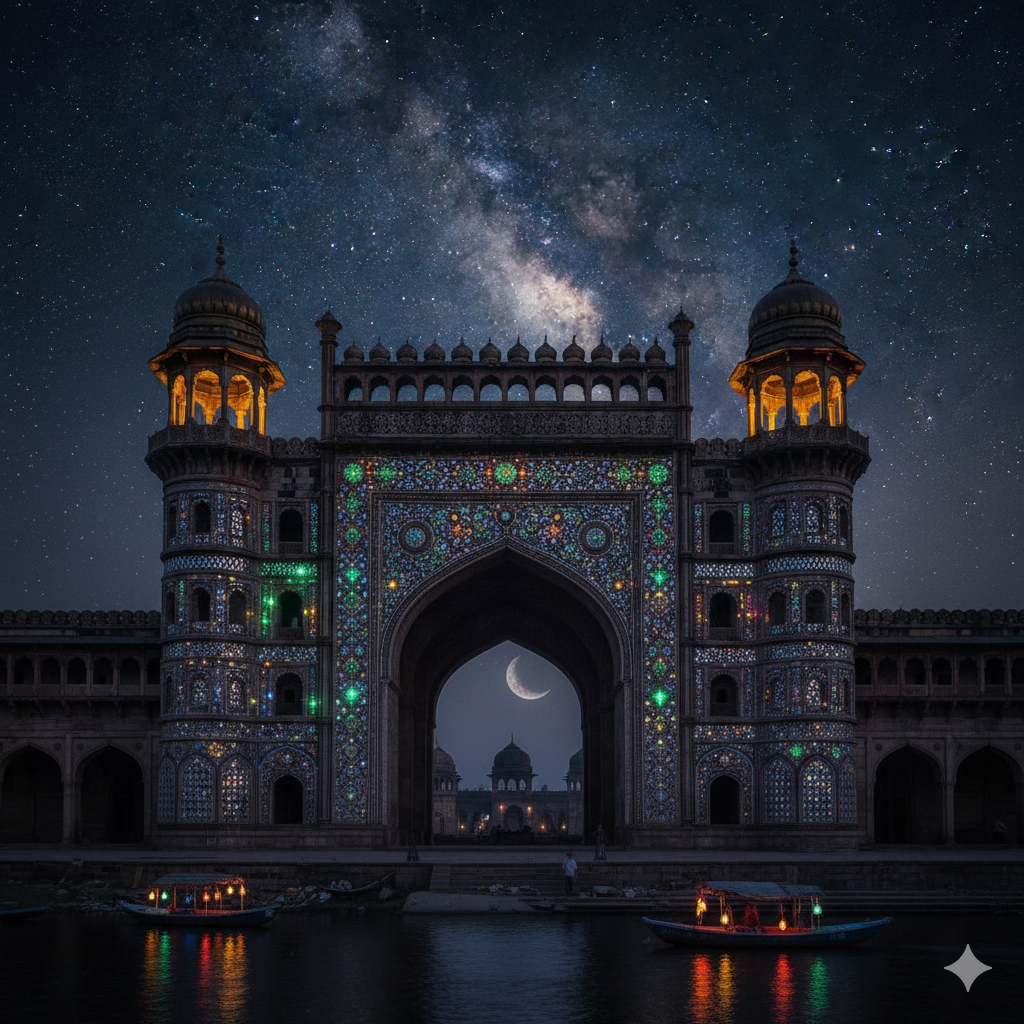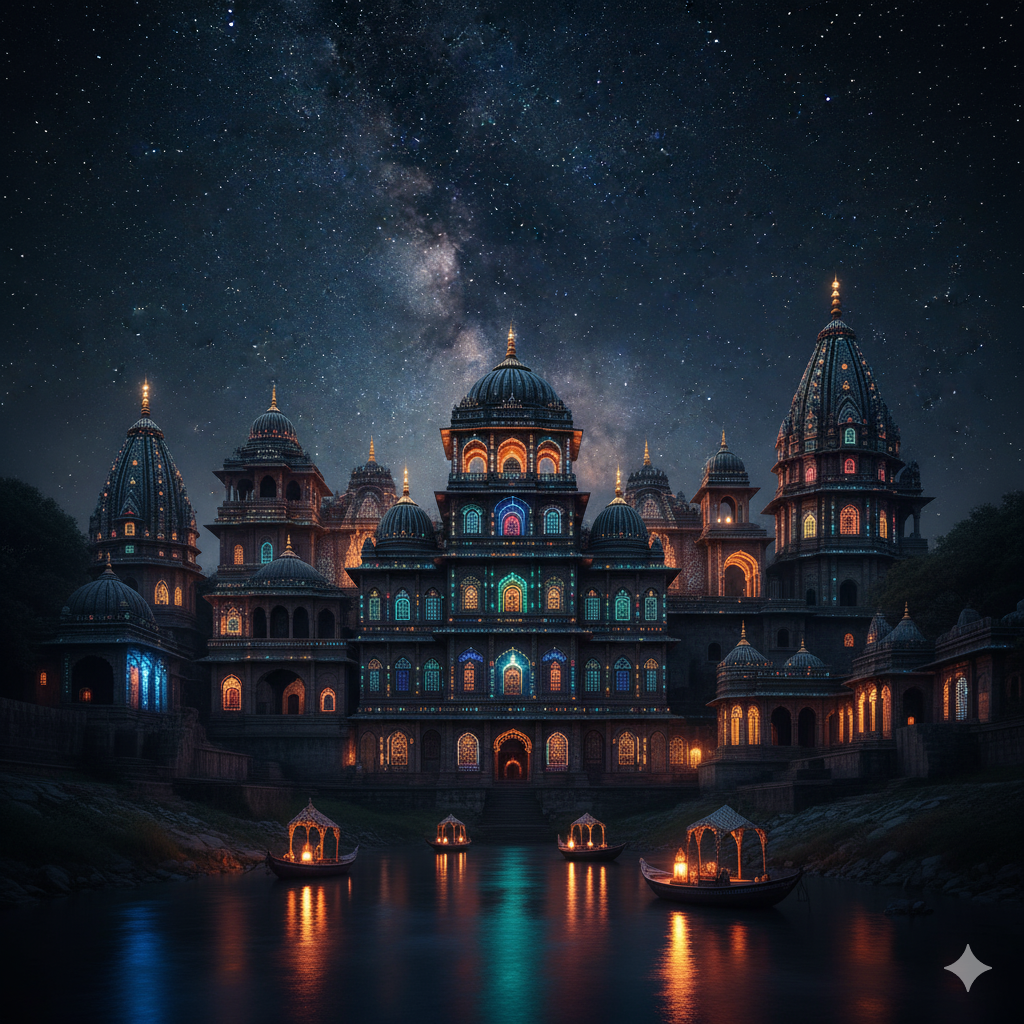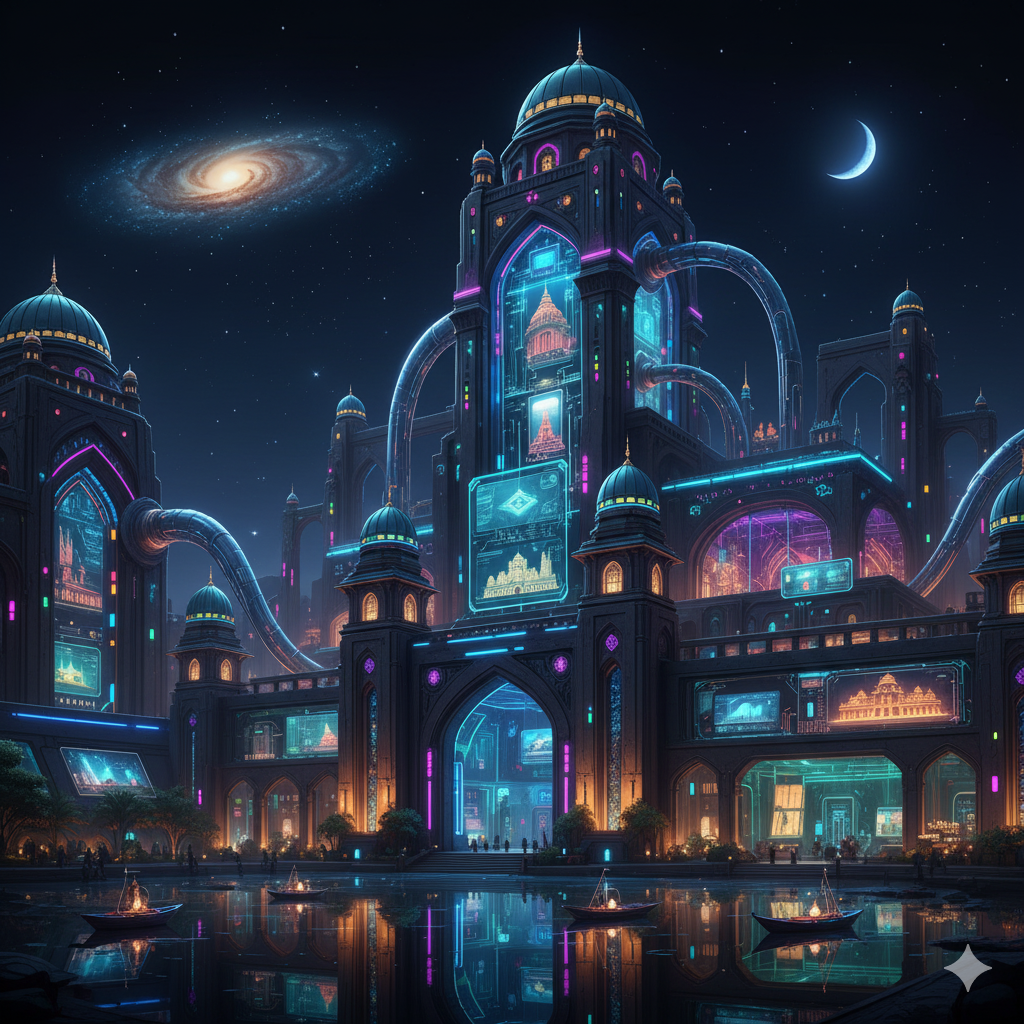Introduction
Bundelkhand, situated in the heart of India, is a historically and culturally rich region that bridges the northern plains and the central highlands. Spanning across the states of Uttar Pradesh and Madhya Pradesh, Bundelkhand represents a unique blend of geographical diversity, socio-cultural unity, and historical legacy. The region has been home to a vibrant civilization marked by heroic traditions, magnificent architecture, folk art, and a deep connection with nature.
As a cultural region, Bundelkhand’s identity is closely tied to its geographical setting — rugged terrain, rocky plateaus, seasonal rivers, and monsoon-dependent agriculture have significantly shaped the lifestyle, economy, and traditions of its people. This article provides a detailed geographical description of Bundelkhand as a cultural region, analyzing its location, topography, climate, rivers, soils, vegetation, settlement patterns, economy, and cultural geography.
1. Location and Extent
Bundelkhand lies roughly between 23°20′ N and 26°20′ N latitudes and 78°20′ E and 81°40′ E longitudes. It is geographically located in the southern part of Uttar Pradesh and the northern part of Madhya Pradesh, forming a transitional zone between the Gangetic Plains and the Vindhyan Plateau.
The region covers about 70,000 square kilometers and includes seven districts in Uttar Pradesh — Jhansi, Jalaun, Lalitpur, Hamirpur, Mahoba, Banda, and Chitrakoot, and six districts in Madhya Pradesh — Datia, Tikamgarh, Chhatarpur, Panna, Sagar, and Damoh.
Boundary Description:
- North: Flanked by the Yamuna River, separating it from the Gangetic plains.
- South: Bounded by the Vindhyan ranges and the valleys of Madhya Pradesh.
- East: Bordered by the Baghelkhand region.
- West: Adjacent to the Malwa Plateau and Gwalior region.
Bundelkhand thus serves as a geographical transition zone — not entirely a plain nor a plateau, but a composite of both. This transitional nature gives rise to diverse ecological and cultural patterns.
2. Physiographic Features
The physiography of Bundelkhand is defined by undulating plateaus, low hills, and rocky terrain, interspersed with fertile valleys. The Vindhyan range, composed primarily of sandstone, shale, and limestone, dominates much of the landscape.
Major Physiographic Divisions:
- The Northern Plain Belt:
Close to the Yamuna River, this area is relatively level and fertile, suitable for agriculture. Districts like Jalaun and Hamirpur fall under this zone, where alluvial soils are found. - The Central Bundelkhand Plateau:
This forms the heart of the region — characterized by rocky outcrops, granite hills, and red soils. Towns like Jhansi, Tikamgarh, and Chhatarpur are located here. The elevation ranges between 300–600 meters above sea level. - The Southern Hilly Zone:
The southern parts, particularly Lalitpur, Panna, and Sagar, are dominated by the Vindhyan highlands, with forested hills and shallow valleys. These areas are less fertile but rich in mineral and forest resources.
Geomorphological Characteristics:
The geological structure of Bundelkhand primarily belongs to the Bundelkhand Craton, one of the oldest geological formations in India. It consists of ancient igneous and metamorphic rocks — mostly granite and gneiss — which have resisted erosion and given the region its rugged look.
These physical characteristics have directly influenced settlement, economy, and even cultural expressions — leading to the development of fortified cities and stone-based architecture.
3. Climate
The climate of Bundelkhand is tropical semi-arid, with marked seasonal variations in temperature and rainfall.
Seasonal Characteristics:
- Summer (March–June): Extremely hot, with temperatures often exceeding 45°C. The dry winds (loo) dominate, making it a harsh season.
- Monsoon (July–September): Southwest monsoon brings about 800–1000 mm of rainfall annually. However, rainfall is highly erratic and uneven, leading to frequent droughts.
- Winter (November–February): Cool and pleasant, with temperatures between 8°C–25°C.
Climatic Influence on Culture:
The harsh summers and unpredictable rainfall have influenced both the architecture (thick-walled houses, small windows) and agricultural practices (dependence on hardy crops like millet, pulses, and oilseeds). Folk songs and literature of Bundelkhand often express the struggles with drought and the hope for rain, showing the deep environmental influence on cultural life.
4. River Systems and Drainage
Bundelkhand’s rivers are mostly seasonal, flowing northward towards the Yamuna River. These rivers have carved deep valleys and provided fertile soil along their banks.
Major Rivers:
- Betwa River: Originating from Raisen district (Madhya Pradesh), it flows through Jhansi and Hamirpur before merging with the Yamuna. The Orchha town and Jhansi fort lie on its banks.
- Ken River: Rising from the hills of Jabalpur, it flows through Panna and Banda districts, known for its scenic Ken Gharial Sanctuary.
- Dhasan River: A tributary of the Betwa, supporting agriculture in Tikamgarh and Lalitpur.
- Paisuni and Mandakini Rivers: Flow through Chitrakoot, considered sacred in Hindu mythology.
Hydrological Importance:
Despite the presence of several rivers, water scarcity remains a chronic issue due to the rocky terrain and poor groundwater retention. Efforts like the Ken-Betwa River Interlinking Project aim to enhance irrigation and reduce drought impact.
Cultural Relevance of Rivers:
Rivers like Betwa and Ken are deeply embedded in Bundelkhand’s folklore, religious practices, and festivals. Sacred ghats, temples, and fairs along these rivers emphasize their spiritual and cultural significance.
5. Soils and Natural Vegetation
Soil Types:
- Red and Yellow Soils: Found in plateau areas, poor in fertility but suitable for pulses and oilseeds.
- Alluvial Soils: Occur along the Yamuna and Betwa valleys, supporting wheat, rice, and sugarcane.
- Black Cotton Soils (Regur): Found in southern parts near Sagar and Damoh, ideal for cotton and soybean cultivation.
The low fertility of plateau soils has historically limited agricultural productivity, influencing rural poverty and migration patterns.
Vegetation:
Natural vegetation is mainly dry deciduous forest, dominated by species such as teak, salai, neem, babool, and palash. However, extensive deforestation for agriculture and fuelwood has led to forest degradation.
Remnant forest areas like Panna Tiger Reserve and Ken Gharial Sanctuary still host rich biodiversity, including tigers, leopards, deer, and numerous bird species.
6. Agricultural and Economic Geography
Agricultural Characteristics:
Bundelkhand’s agriculture is largely rain-fed and subsistence-based. The region faces recurrent droughts and water stress, which affect crop yields.
Main Crops:
- Kharif: Millets (bajra, jowar), pulses, soybean, and groundnut.
- Rabi: Wheat, gram, and mustard.
Irrigation coverage remains low compared to other regions of Uttar Pradesh and Madhya Pradesh, though new canal projects and watershed initiatives are improving the situation.
Livelihood and Industries:
- Agriculture and Animal Husbandry form the backbone of the rural economy.
- Stone quarrying and mining (granite, limestone, sandstone) are major non-farm activities.
- Handicrafts and weaving, especially in towns like Chanderi and Mahoba, reflect local artistry and cultural identity.
- Tourism is emerging as a vital economic sector, with destinations like Khajuraho, Orchha, Jhansi, and Chitrakoot attracting visitors worldwide.
The economy, though traditionally agrarian, is now diversifying with better road networks and government initiatives like the Bundelkhand Package aimed at regional development.
7. Settlement and Demographic Characteristics
Bundelkhand’s population density is relatively low compared to the Gangetic plains, reflecting its semi-arid environment and limited agricultural potential. Settlements are typically scattered villages with traditional houses made of stone and mud.
Urban Centers:
Major urban centers include Jhansi, Banda, Chitrakoot, Sagar, and Tikamgarh. Jhansi serves as a regional hub for trade, education, and administration.
Demographic Features:
- Language: Bundeli, a dialect of Hindi, is the primary language.
- Religion: Hinduism predominates, but cultural pluralism exists with Jain, Muslim, and tribal influences.
- Population Growth: Slower than the state average due to outmigration in search of employment.
8. Cultural Landscape and Heritage
Bundelkhand’s cultural identity is a product of its geography and history. The region’s rugged terrain fostered a tradition of valor and resilience, evident in its folklore and historical monuments.
Historical Legacy:
The region derives its name from the Bundela Rajputs, who ruled during the medieval period. Forts like Jhansi Fort, Kalinjar Fort, and Orchha Palace symbolize the martial spirit and architectural brilliance of Bundelkhand.
Cultural Expressions:
- Language and Literature: The Bundeli dialect is known for its folk songs and ballads that narrate tales of bravery, love, and hardship.
- Music and Dance: Traditional forms like Rai dance and Alha-Udal ballads celebrate heroic deeds and rural life.
- Art and Architecture: The Khajuraho Temples (UNESCO World Heritage Site) represent the zenith of Chandela art, reflecting both spirituality and sensuality.
- Festivals: Celebrations like Diwali, Holi, Kajli Mela, and Ramnavami are observed with local variations, emphasizing communal harmony and devotion.
Environmental Influence on Culture:
The scarcity of water, heat, and rugged landscape have influenced cultural adaptations — from the design of homes to water conservation traditions (kunds, stepwells, tanks).
9. Environmental Challenges and Developmental Issues
Bundelkhand faces severe environmental stress due to:
- Deforestation and soil erosion
- Overexploitation of groundwater
- Erratic monsoons and droughts
- Land degradation due to mining
These factors have caused agrarian distress and migration to urban centers. The government has launched initiatives like the Bundelkhand Drought Mitigation Plan and watershed development programs to address these issues.
Sustainable Development Efforts:
Efforts are being made to integrate traditional water conservation systems with modern technology. Projects like Ken-Betwa Link aim to ensure sustainable irrigation, though environmentalists stress the need for ecological balance.
10. Bundelkhand as a Cultural Region
A cultural region is defined not just by political boundaries but by shared traditions, values, and lifestyle. Bundelkhand qualifies as a distinct cultural region due to its homogeneity in language, customs, and historical experience, all rooted in its geographical setting.
Key Cultural-Geographical Traits:
- Language Unity: Bundeli dialect unites people across both states.
- Architectural Continuity: Stone-based forts and temples from Chitrakoot to Khajuraho showcase a shared aesthetic style.
- Environmental Adaptation: Cultural practices shaped by arid conditions — water harvesting, food habits (millet-based diet), and housing designs.
- Historical Cohesion: Shared memories of rulers like the Bundelas and freedom icons like Rani Laxmi Bai of Jhansi.
- Religious and Spiritual Identity: Sacred geography of Chitrakoot and Orchha connects local traditions with the broader Hindu spiritual map.
Bundelkhand thus stands as a natural cultural unit, where geography, history, and tradition converge to form a coherent regional identity.
Conclusion
Bundelkhand’s geography — with its plateaus, rivers, hills, and semi-arid climate — has profoundly influenced its history, economy, and culture. Despite environmental hardships, the people of Bundelkhand have preserved a vibrant cultural heritage that reflects both resilience and creativity.
As India advances towards balanced regional development, Bundelkhand’s sustainable progress depends on integrating its traditional ecological wisdom with modern developmental strategies. Recognizing Bundelkhand not only as a geographical entity but as a cultural region is essential to appreciating its role in India’s civilizational mosaic.




